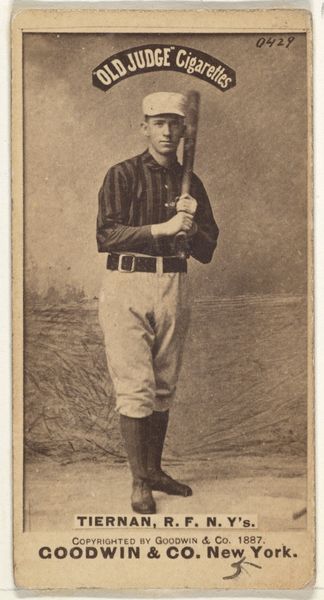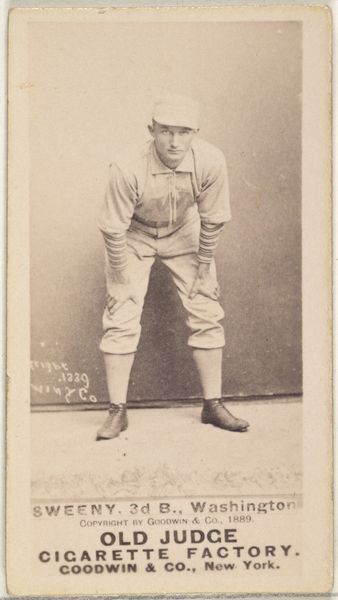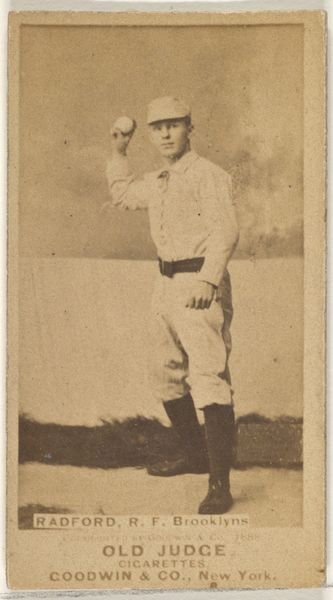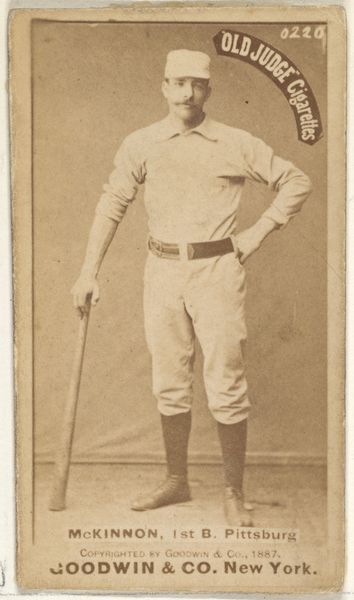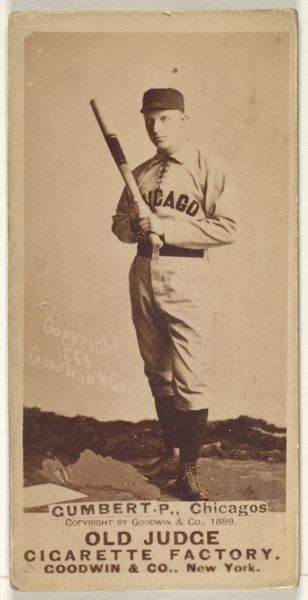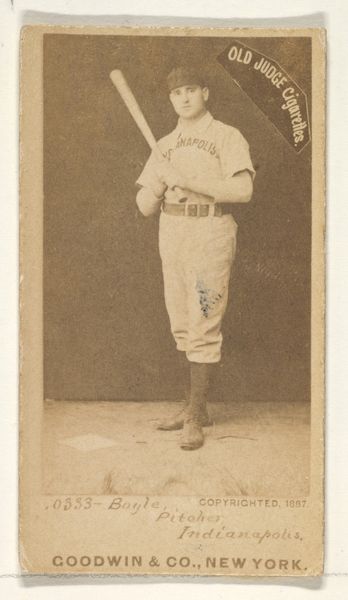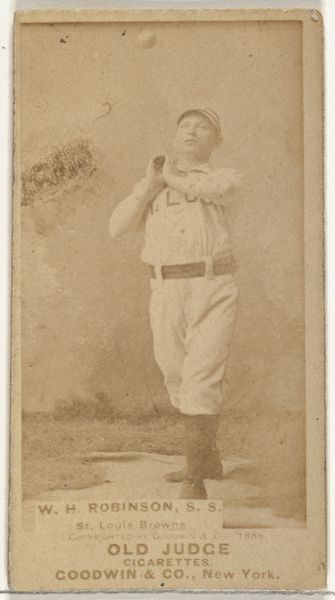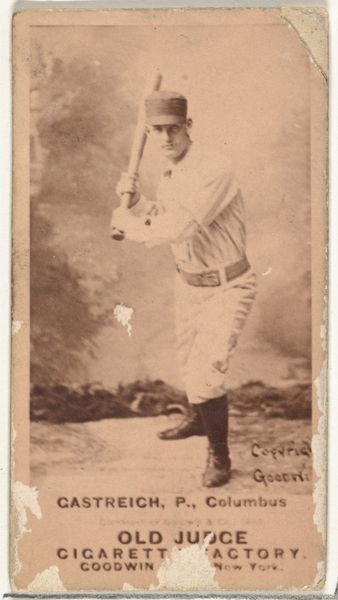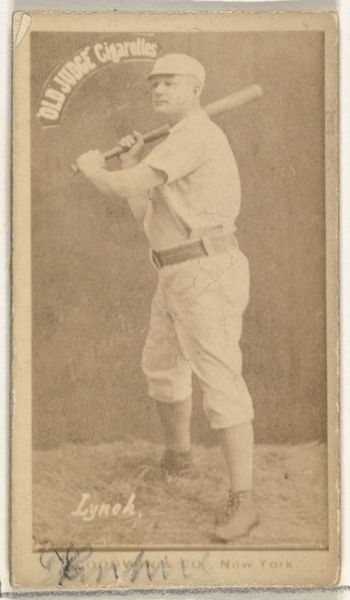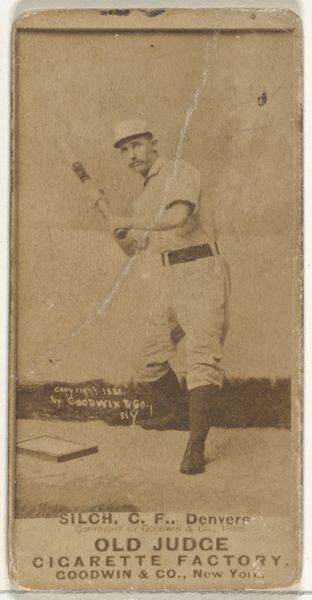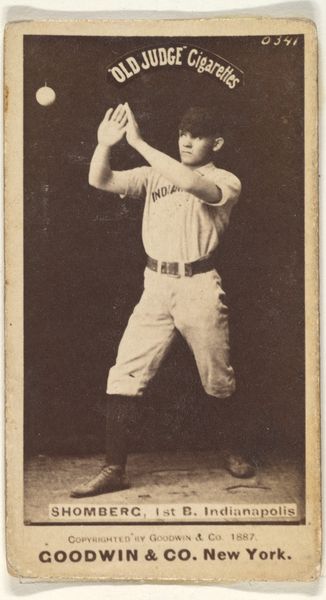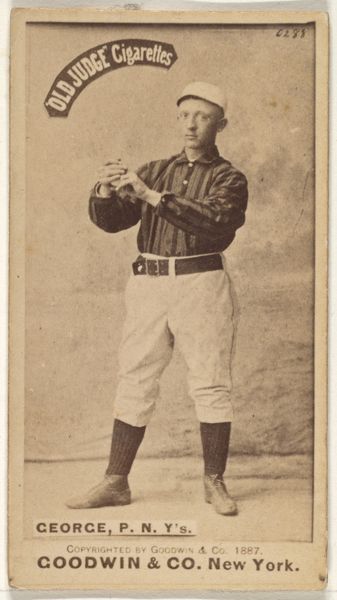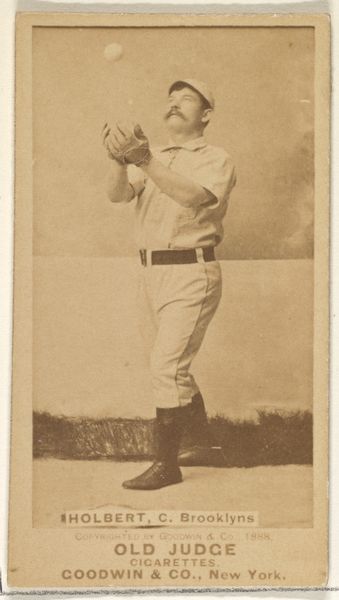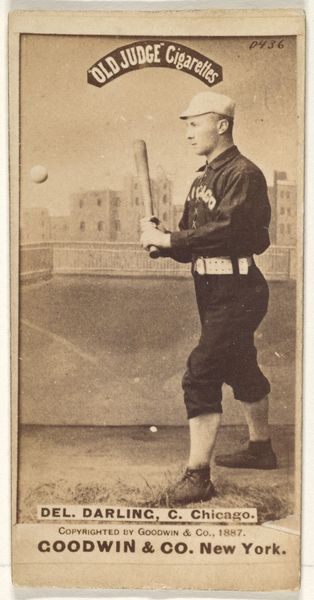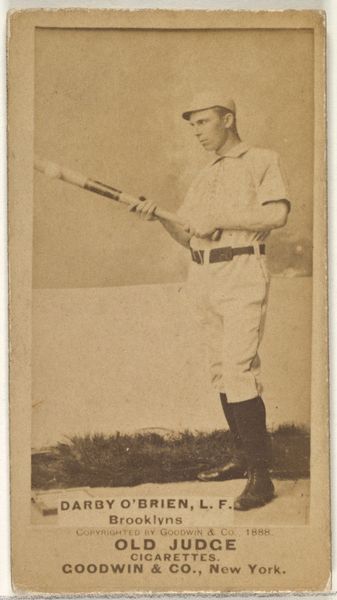
Conroy, Washington, American League, from the White Border series (T206) for the American Tobacco Company 1909 - 1911
0:00
0:00
drawing, print
#
portrait
#
drawing
# print
#
caricature
#
baseball
#
men
#
genre-painting
#
history-painting
#
portrait art
Dimensions: Sheet: 2 5/8 x 1 7/16 in. (6.7 x 3.7 cm)
Copyright: Public Domain
Editor: This is "Conroy, Washington, American League," a baseball card printed by the American Tobacco Company between 1909 and 1911. It has a simple, almost iconic feel to it, and the muted colors give it a real sense of age. What do you see when you look at this print? Curator: Initially, my eye is drawn to the subtle interplay of the composition's geometric structure. The subject, centered in the frame, anchors the composition. Examine how the planes of color—the green base, the muted sky—segment the visual space and draw your eye toward the centrally located figure, subtly enhancing his dominance of the piece. Editor: So you're focusing on the formal structure, not necessarily what it represents? Curator: Precisely. Although representation matters, I am intrigued by the artist’s formal decisions. The use of line, particularly in defining the figure's features and clothing, showcases a deliberate precision, a near mechanical uniformity indicative of mass production techniques of the era. The textural interplay between the smooth, unmodulated areas and the granular rendering of the figure adds visual depth and tactility. What do you make of that textured application of ink? Editor: I suppose it's functional – economical and quick. What is implied through that stylistic approach? Curator: Consider the artist’s objective here: is it verisimilitude, or rather the commodification of an idealized type? The soft colors work to enhance this effect, further reducing any harsh lines and thus creating a somewhat dreamlike, almost romantic portrayal, even though the means of production suggest a wholly modern sensibility. It's a curious contrast, don't you think? Editor: That is a new way of seeing it. Thank you. Curator: My pleasure. A work like this offers multiple avenues for understanding based on the viewer's own critical lens.
Comments
No comments
Be the first to comment and join the conversation on the ultimate creative platform.
